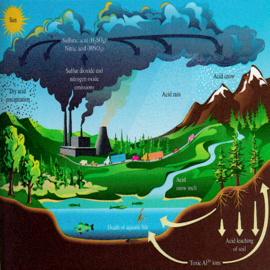
By definition, commercial diving is a branch of professional diving. While many of us enjoy the delights of the aquatic world for purely recreational purposes, for some people, the underwater ecosystem is a place of work. This article covers the detailed description of the distinct branches of commercial diving, meant for anyone considering commercial diving as a career or for those simply interested in diving as a hobby.
Offshore diving is the most popular form of commercial diving. It mainly consists of professional divers working from oil rigs but also covers the gas industry and many others. Offshore diving is very popular in a few select parts of the world such as the Gulf of Mexico, the United Kingdom and Norway. The work revolves around maintaining oil platforms and submerged structures to be used in production processes. This is a relatively dangerous commercial diving career requiring a lot of dedication and hard work, usually 12-hour shifts for several weeks without any day off.
Inshore diving is another branch of diving sharing quite a few similarities with offshore diving in terms of the nature of the work. The difference lies mainly in the geographical aspect, with inshore diving involving mainly civil engineering assignments in harbours and rivers. Professional inshore divers are usually expected to be able to work on a large variety of projects. Unlike offshore work, inshore divers are usually based closer to home.
HAZMAT diving is perhaps the most dangerous aspect of commercial diving demanding highly skilled and highly trained divers. The workload typically constitutes of handling issues with sewage treatment plants or hazardous chemical plants such as oil sludge. The divers are vaccinated regularly and the commercial diving company has to meet certain hygiene standards. Some of the common tasks of HAZMAT diving include the maintenance of sluice gates, the repair of compromised pipelines, pollution management projects and finding dead bodies. Sewer diving is considered to be the most hazardous of HAZMAT diving duties owing to the multiple health problems the employees may pick up from the raw sewage plants despite the heavy protective garments and accessories provided. HAZMAT divers are usually subject to cloudy water bodies and they may have to rely on their heightened touch sense.
Nuclear diving is yet another form of commercial diving, very similar to HAZMAT diving. The most obvious difference is that nuclear commercial divers are exposed to harmful nuclear substances rather than raw sewage. Endless precautions are taken by nuclear dive companies to ensure the safety of their employees, nuclear substances can be tricky to say the least. Heat stress is a common problem to many nuclear divers who in turn use a cold suit. A dosimeter ensures that divers do not become subject to too great a radiation output or death may follow.
Diving can be incredibly challenging work but is no doubt a rewarding career should you choose it. The work does require a certain character, working in a dangerous, alien environment on a daily basis is not for everybody.
A diver must possess not only the personal qualities to perform the job but also a wide range of skills to be able to do the job. After all, diving is simply a way of getting to work.
For those with an interest in this line of work who would prefer not to get wet, you may consider looking into becoming another element of the dive team. Diving supervisors and tenders are an equally important role and required by law where any diving work is to take place.
For more information related to diving and other supporting roles, take a look at Commercial Diving Magazine online where you can find a range of useful information on the subject. If you have any comments, questions or useful information to share you can even join in and become an author on the site.

Source by Ben J Dixon
 Vitamin Agent The Health & Naturalistic Source
Vitamin Agent The Health & Naturalistic Source





